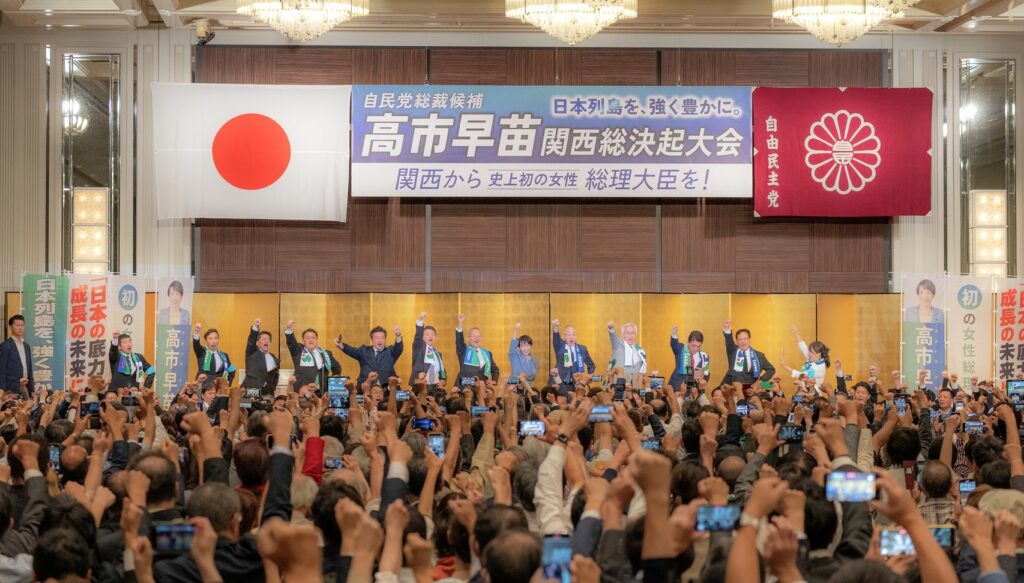The Peninsula
A Gathering Storm in Tokyo Shadows Seoul’s APEC Moment

The upcoming Asia-Pacific Economic Cooperation (APEC) summit was intended to showcase South Korea’s claim to leadership on a range of issues from free trade, digital and artificial intelligence, and democracy. Instead, the Lee Jae Myung administration finds itself beset by shifting geopolitical winds.
A potential summit between U.S. President Donald Trump and Chinese leader Xi Jinping, or even North Korean leader Kim Jong Un, will likely overshadow anything else that occurs at APEC. Elsewhere, the unsteady Gaza armistice and a renewed attempt by Trump and Russian leader Vladimir Putin to forge a Ukraine deal continue to dominate headlines.
There is also the imminent shift in leadership in neighboring Japan. Despite efforts to maintain the momentum of improvement in South Korea-Japan relations, embraced by Lee and Prime Minister Shigeru Ishiba, South Korea faces the prospect of a new Japanese government less inclined to confront historical issues.
Japan’s Unstable Politics
Japan is experiencing a level of political instability and uncertainty not seen since the early 1990s, when the ruling conservative Liberal Democratic Party (LDP) suffered electoral setbacks, splintering defections, and a loss of power. Following the resignation of Prime Minister Ishiba, the LDP somewhat surprisingly elected hardline conservative Sanae Takaichi to lead the party and form a new government as prime minister.
But Takaichi’s path to power has been anything but smooth. A deep loyalist to the late Shinzo Abe, she is mistrusted within her own party and by most of the opposition. Her victory convinced the Buddhist Komei party to end its quarter-century coalition with the LDP, citing Takaichi’s apparent alignment with anti-reformers and unrepentant views on Japan’s wartime and colonial history, symbolized by regular visits to the Yasukuni Shrine.
The LDP lacks a majority in either house of the legislature, so it must form an alliance to garner enough seats to form a minority government. Ishiba governed this way for the last several months.
However, the backlash against Takaichi has prompted the main opposition parties—the Constitutional Democratic Party, the Democratic Party For the People, and the Japan Innovation Party—to consider forming a government instead. The three parties combined would be able to name a prime minister. The Komeito might also back such a coalition.
Instead, Takaichi and the LDP seem poised to lure the Japan Innovation Party, the most conservative of the opposition parties, into a new coalition. Together, they would be just two seats short of a majority in the lower house and five seats short in the upper house. Takaichi also met separately with Sohei Kamiya, leader of the ultra-right-wing nationalist Sanseito party—which holds a small but significant number of seats—to discuss cooperation. A parliamentary vote is expected to occur on October 21.
A Gathering Right-Wing Japanese Government
The prospect of Takaichi as Japan’s next prime minister alarmed observers in South Korea even ahead of the LDP inner-party vote.
“Takaichi is a disaster for Korea,” a former South Korean ambassador to Japan told this writer at that time. Former Ambassador to Japan Shin Kak-soo similarly warned against the “election of a hawkish PM who might derail the restoration process of Korea-Japan relations.”
Some have held out the hope that Takaichi would moderate her views for the sake of pragmatism, emulating how Abe governed. She reportedly will name Abe’s foreign minister, Toshimitsu Motegi, to the same post. She has also been advised to stay away from Yasukuni. Abe was the last prime minister to visit the shrine, twelve years ago.
“I will make a decision on how to pay my respects and pray for peace at an appropriate time and in an appropriate manner,” Takaichi told reporters after winning the LDP vote earlier this month.
But in the LDP race last year, Takaichi made it clear she would visit Yasukuni, which she has done regularly as a cabinet minister. “At an appropriate time, I want to visit properly, calmly and as I usually do,” she said. In a defiant statement at a symposium in 2022 hosted by the shrine authorities, she declared: “Stopping visits midway or acting half-heartedly only emboldens the other side. No matter how much criticism I face, I will continue calmly and matter-of-factly.”
This is only a small window into Takaichi’s view of Japan’s wartime past and cynicism toward pacifism. In a recent book based on a series of dialogues with right-wing commentator Yoshiko Sakurai, she argued that, “If a nation succumbs to aggression and loses sovereignty, it loses its existence as a nation – language, culture, and territory will be all be taken away.” She also warned that, “Other nations will not come to the aid of a country that lacks the will and courage to defend itself.”
In this spirit, Takaichi is a vocal advocate of assertive patriotism, both in defense policy and historical memory. Japan’s problem, she argues, is not what it did in World War II but that it lost.
“If Japan had won the war, Japan probably wouldn’t be blamed by anyone now, and those who started the war would be heroes,” she said. “When victors judge the vanquished, it creates an enduring misery of defeat and hardship for future generations. Yet I believe it is wrong for Japanese people to apologize endlessly simply for being born Japanese.”
An alliance with the Japan Innovation Party would be more amenable to these views. The party is primarily focused on domestic issues, specifically the interests of the Kansai region, centered on Osaka, where it is based. But to the extent it has dealt with these questions, the party leans revisionist. More radical is Sanseito, which takes an extreme nationalist stance and frequently discusses Japan’s war period.
Ishiba’s Farewell Address
Prime Minister Ishiba has long opposed this wing of the LDP. The triumph of Takaichi and the prospects of a conservative nationalist government are clearly concerning him. On October 10, Ishiba delivered a lengthy statement on the eightieth anniversary of the end of the war, which contained unmistakable warnings against this shift to the right, not only in Japan but beyond.
Ishiba wrote that Japan’s defeat was inevitable. He asked rhetorically, “Why did the leadership of the government and the military plunge headlong into a reckless war that resulted in the loss of so many innocent lives, both at home and abroad, and why were they not able to make decisions to avoid the war?”
The answer, he continued, was a failure of civilians to control the military, erosion of democracy, violent extremism, nationalism, and a failure to understand the world outside Japan’s borders.
Ishiba draws lessons from this past for the present, that are clearly aimed at the current shift to the right. “Healthy discourse, including mission-driven journalism is necessary. During the war, the media stirred up public opinion, ultimately leading the nation into a reckless war. We must not fall into excessive commercialism, or tolerate narrow-minded nationalism, discrimination, or xenophobia.”
Japan, he cautions, must learn from history. “What matters most are the courage and integrity to squarely face the past, classical liberalism that values the tolerance of listening humbly to the arguments of others, and a healthy and robust democracy.”
The APEC Test
Barring a failure to form a new government, Ishiba will not attend the APEC summit. His successor will face a significant challenge in not undermining the progress made in South Korea-Japan relations and in addressing the geopolitical shifts that are unfolding. That same challenge faces President Lee. In the best of circumstances, the South Korean and Japanese leaders will join hands and lean on each other, as they have over the last few years, and confront ongoing geopolitical challenges together.
Daniel C. Sneider is a non-resident Distinguished Fellow at the Korea Economic Institute of America and a lecturer in East Asian Studies at Stanford University.
Feature image from Sanae Takaichi’s official X account.
KEI is registered under the FARA as an agent of the Korea Institute for International Economic Policy, a public corporation established by the government of the Republic of Korea. Additional information is available at the Department of Justice, Washington, D.C.
